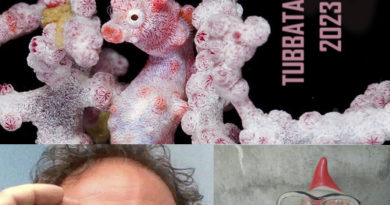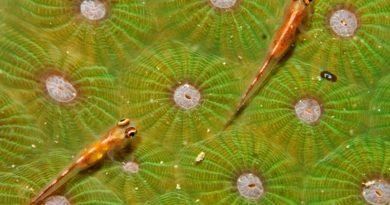This Week in Marine Biology
Science is important.
Communicating science is important.
This week lots of talented, hard-working biologists all over the world worked to further humanity’s understanding of the ocean and of the animals in it. Some fascinating papers were published. Important observations were made. Theories were pondered. I did even some of the pondering, a very small part of it (how do you quantify theory pondering?), myself.
This week also a very scientifically sound deep-sea expedition (using a remote operated vehicle, without people in it, a ROV) took a picture of a yellow sponge next to an orange seastar, just like the Patrick and Sponge Bob of cartoon fame. This caught a lot of media attention.
What do I think about that? I think it’s great.
If the interest in the “real life Sponge Bob” causes 1% of the people who read about the story to become more interested in the ocean, that’s a big win. If someone reads the news story about the “Sponge Bob and Patrick Doppelgänger” and then goes on to read the Wiki pages (or other serious content) about sponges and seastars, that’s a gain for science education. Not everything has to be “Beer ernst” (= serious as matters pertaining to beer), as the German phrase puts it.
And if someone just loos at the “Real Sponge Bob” picture, is entertained, and doesn’t go on to learn more? Also okay. The person had a laugh, and we might get him or her with some science the next time.
Also, I love the Sponge Bob cartoon, I think it’s brilliant dadaist humor, with a layer for kids and one for adults. In a recent video we even made a reference to the Sponge Bob character “Sandy Cheeks”:
And, by the way…
I also can “yellow animal in the ocean”. This is Aegires citronella, a #nudibranch sea slug which mimics yellow sponges for camouflage. I shot that a few years ago when I was living and diving in Okinawa, Japan, which is a top spots for nudibranchs, in my opinion.
View this post on Instagram



